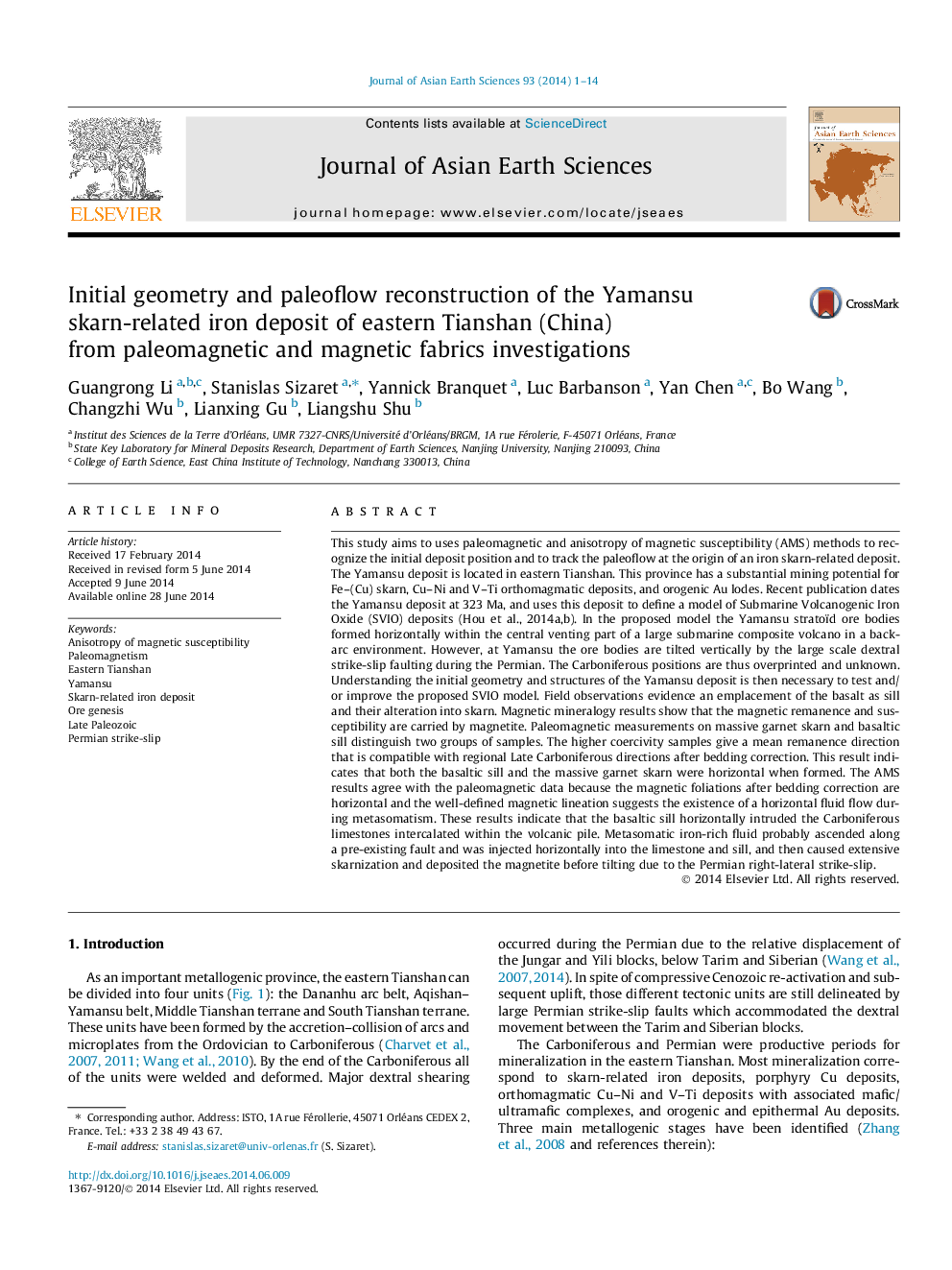| کد مقاله | کد نشریه | سال انتشار | مقاله انگلیسی | نسخه تمام متن |
|---|---|---|---|---|
| 4730716 | 1640375 | 2014 | 14 صفحه PDF | دانلود رایگان |
• Yamansu is one of the most studied skarn-related iron deposit in the Tianshan.
• Magnetite is deposed at the end of the prograde stage.
• Paleomagnetic measurements are used to show the tilting of the ore body.
• Magnetic fabrics suggest magma and hydrothermal flows along a pre-existing fault.
This study aims to uses paleomagnetic and anisotropy of magnetic susceptibility (AMS) methods to recognize the initial deposit position and to track the paleoflow at the origin of an iron skarn-related deposit. The Yamansu deposit is located in eastern Tianshan. This province has a substantial mining potential for Fe–(Cu) skarn, Cu–Ni and V–Ti orthomagmatic deposits, and orogenic Au lodes. Recent publication dates the Yamansu deposit at 323 Ma, and uses this deposit to define a model of Submarine Volcanogenic Iron Oxide (SVIO) deposits (Hou et al., 2014a,b). In the proposed model the Yamansu stratoïd ore bodies formed horizontally within the central venting part of a large submarine composite volcano in a back-arc environment. However, at Yamansu the ore bodies are tilted vertically by the large scale dextral strike-slip faulting during the Permian. The Carboniferous positions are thus overprinted and unknown. Understanding the initial geometry and structures of the Yamansu deposit is then necessary to test and/or improve the proposed SVIO model. Field observations evidence an emplacement of the basalt as sill and their alteration into skarn. Magnetic mineralogy results show that the magnetic remanence and susceptibility are carried by magnetite. Paleomagnetic measurements on massive garnet skarn and basaltic sill distinguish two groups of samples. The higher coercivity samples give a mean remanence direction that is compatible with regional Late Carboniferous directions after bedding correction. This result indicates that both the basaltic sill and the massive garnet skarn were horizontal when formed. The AMS results agree with the paleomagnetic data because the magnetic foliations after bedding correction are horizontal and the well-defined magnetic lineation suggests the existence of a horizontal fluid flow during metasomatism. These results indicate that the basaltic sill horizontally intruded the Carboniferous limestones intercalated within the volcanic pile. Metasomatic iron-rich fluid probably ascended along a pre-existing fault and was injected horizontally into the limestone and sill, and then caused extensive skarnization and deposited the magnetite before tilting due to the Permian right-lateral strike-slip.
Journal: Journal of Asian Earth Sciences - Volume 93, 15 October 2014, Pages 1–14
